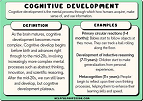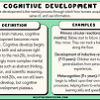EARLY CHILDHOOD DEVELOPMENTAL MILESTONES ALONG THE PHYSICAL/MOTOR DOMAIN
INTRODUCTION
From infancy through early childhood, there are certain milestones that we expect our infants or children to chalk to show that they are making progress. Here is an outline of early childhood developmental milestones along the physical or motor domain:
GROSS MOTOR SKILLS (LARGE MUSCLE MOVEMENTS)
Infancy (0-2 years old): Rolling over, crawling, sitting up, standing, walking, running, jumping, climbing. For instance, by 12 months of age, infants typically can stand and walk with assistance and by 2 years of age, they can run and jump independently.
Early Childhood (2-6 years old): Skipping, hopping, galloping, throwing, catching, kicking, balancing on one foot, riding a tricycle or bicycle with training wheels. For instance, by 4 years of age, children typically can hop on one foot and by 5 years of age, they can skip and catch a ball with two hands.
FINE MOTOR SKILLS (SMALL MUSCLE MOVEMENTS)
Infancy (0-2 years old): Grasping, holding, releasing objects, reaching for and picking up objects, exploring objects with hands and mouth. For instance, by 6 months of age, infants naturally can grasp and hold small objects and by 18 months of age, they can use a spoon to feed themselves.
Early Childhood (2-6 years old): Drawing with crayons or markers, using scissors, manipulating small objects, stringing beads, building with blocks, buttoning and zipping clothing. For instance, by 3 years of age, children naturally can use a fork and spoon and by 4 years of age, they can use scissors to cut out simple shapes.
SENSORY DEVELOPMENT
Infancy (0-2 years old): Developing vision, hearing, taste, smell and touch. For instance, infants typically can track objects with their eyes and respond to sounds and voices by 2 months of age.
Early Childhood (2-6 years old): Developing hand-eye coordination, visual perception, auditory perception, taste and smell discrimination. For instance, by 3 years of age, children typically can distinguish and match simple shapes and colours and by 5 years of age, they can identify and name letters and numbers.
Health and Wellness
Infancy (0-2 years old): Developing strength and muscle control, teething, gaining weight and height, developing the immune system. For instance, infants typically can lift their heads and roll over by 4-6 months of age and begin teething by 6-9 months of age.
Early Childhood (2-6 years old): Developing hand hygiene and self-care routines, developing healthy eating habits, getting enough exercise, improving coordination and balance. For instance, children should engage in at least 1 hour of physical activity per day and eat a balanced diet that includes fruits, vegetables, whole grains, and lean protein sources.
CONCLUSION
It is important for the family, teachers, caregivers, among others to create the right environment and conditions for infants and children to thrive through these developmental milestones to prevent avoidable problems during these stages.
REFERENCES
American Academy of Pediatrics. (2021). Developmental milestones: 2 months. HealthyChildren.org. https://www.healthychildren.org/English/ages-stages/baby/Pages/Developmental-Milestones-2-Months.aspx
Centers for Disease Control and Prevention. (2021). Developmental milestones.https://www.cdc.gov/ncbddd/childdevelopment/positiveparenting/infants.html



